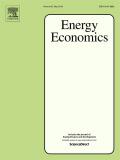
The green economy in North America is at a critical crossroads. Will it foster a new wave of economy-wide innovation, employment, and green growth, or will green sectors remain a niche within an overall “brown” economy? Much will depend on what replaces the current “policy void” since the green stimulus policies of the Great Recession. Currently, three major market disincentives remain: environmentally harmful subsidies, inadequate market-based incentives, and insufficient public support for private R&D. A policy strategy for green growth requires phasing out and rationalizing subsidies, instigating effective market-based instruments, and allocating the revenues raised to enhance green innovation.
This article was published in a special edition of Canadian Public Policy, “Big Ideas for Sustainable Prosperity: Policy Innovation for Greening Growth”, guest edited by the Smart Prosperity Institute.
Although there is progress in developing green sectors in North America and East Asia, the key challenge facing the expansion of economy-wide green innovation and structural change in these regions is the absence of relevant policy follow-up to the green stimulus enacted during the Great Recession. The boost to green sectors provided by such measures is waning quickly, given that much of the green stimulus focused on energy efficiency.
The biggest obstacles to sustaining green growth in North America and East Asiaare major market disincentives, especially the under-pricing of fossil fuels and market failures that inhibit green innovation. A three-part strategy to overcome these obstacles would involve: first, removing fossil fuel subsidies; second, employing market-based instruments to further reduce the social costs of fossil fuel use; and third, allocating any resulting revenue to public support for green innovation and investments. Such a strategy would ensure that green growth is not about promoting niche green sectors but instigating economy-wide innovation and structural transformation in North America and East Asia.

Large public investments in clean energy technology arguably constitute an industrial policy. One rationale points to market failures that have not been corrected by other policies, most notably greenhouse gas emissions and dependence on oil. Another inspiration for clean energy policy reflects economic arguments of the 1980s. It suggests strategic government investments would increase U.S. firms' market share of a growing industry and thus help American firms and workers. This paper examines the reasoning for clean energy policy and concludes that:
Over the past several years, labeling schemes that focus on a wide range of environmental and social metrics have proliferated. Although little empirical evidence has been generated yet with respect to carbon footprint labels, much can be learned from our experience with similar product labels. We first review the theory and evidence on the role of product labeling in affecting consumer and firm behavior. Next, we consider the role of governments and nongovernmental organizations, concluding that international, multistakeholder organizations have a critical part to play in setting protocols and standards. We argue that it is important to consider the entire life cycle of a product being labeled and develop an international standard for measurement and reporting. Finally, we examine the potential impact of carbon product labeling, discussing methodological and trade challenges and proposing a framework for choosing products best suited for labeling.
This article appeared in the Energy Economics Supplemental Issue: Green Perspectives.
